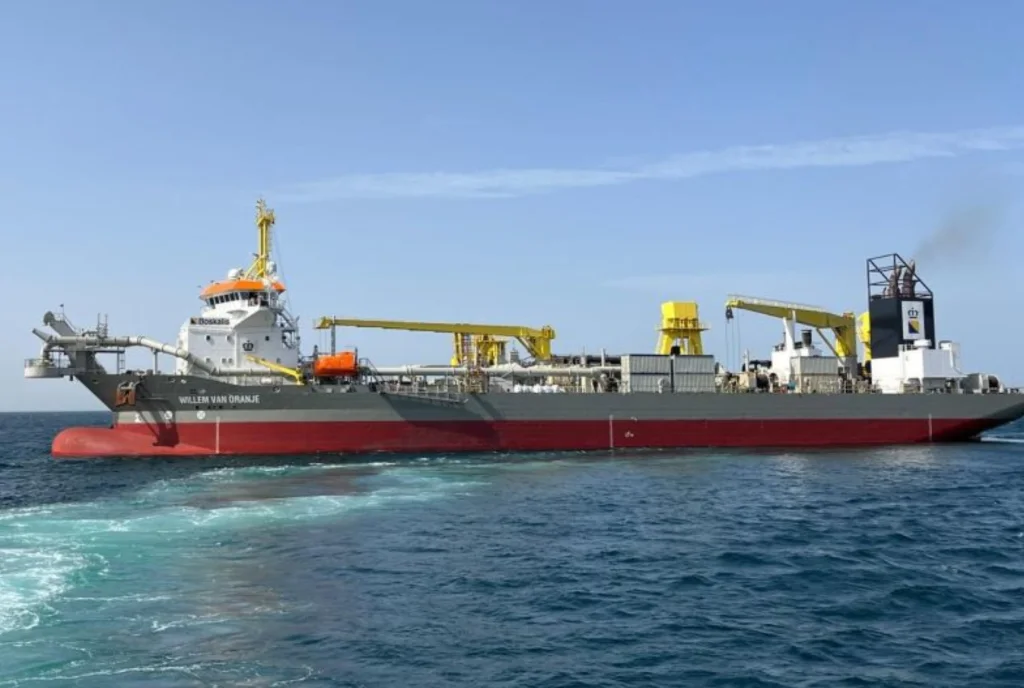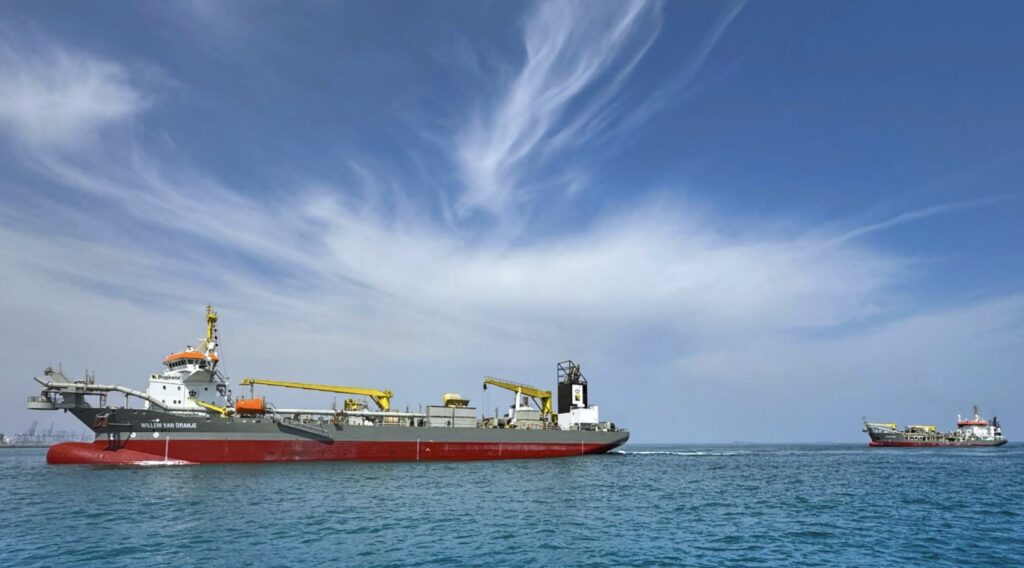In a landmark maritime initiative, Dutch dredging and heavy-lift company Boskalis Powers is rapidly progressing on its high-impact Sohar dredging project in Oman. This large-scale operation, currently in full swing, is an essential component of the ambitious Marsa LNG project—an energy development poised to make Oman a leading regional hub for liquefied natural gas.
As one of the world’s most respected marine contractors, Boskalis is leveraging decades of experience to execute the complex dredging operations required to prepare the coastal and port areas for future LNG infrastructure. The project involves the excavation and removal of around four million cubic meters of material from the seabed to create a deepwater approach channel and berth pocket suitable for LNG carriers.
Driving Oman’s Sustainable Energy Ambitions
The Marsa LNG initiative, jointly spearheaded by TotalEnergies and Oman’s state-owned energy company OQ, reflects a transformative step in Oman’s national energy strategy. With a total investment of approximately $1.6 billion, the project is designed to support the production and export of one million metric tonnes of LNG annually. Even more notably, it will be the first LNG plant in the region powered entirely by renewable energy.

The LNG facility will run on energy supplied by a state-of-the-art 300-megawatt solar photovoltaic power plant, which is currently under development. This clean energy approach is a cornerstone of Oman’s broader vision to reach net-zero carbon emissions by 2050. The Marsa LNG project is not only expected to create hundreds of jobs during the construction and operational phases but also contribute significantly to the diversification of Oman’s economy.
Cutting-Edge Equipment in Action
To carry out the complex dredging operations, Boskalis has deployed a fleet of advanced dredging vessels tailored to the specific environmental conditions of the Gulf of Oman. These include the trailing suction hopper dredgers Willem van Oranje and Coastway, as well as the powerful backhoe dredger Colbart.
The Willem van Oranje has already completed its tasks on site, while the Coastway and Colbart continue refining the depths of the approach channel and berth pocket. Supporting these vessels are the tug Aquamarine and the multipurpose vessel Sidi, which is equipped with a plough for seabed leveling. The entire operation is being carried out with precision and efficiency, keeping environmental protection in focus.
Boskalis’ use of compact and maneuverable dredging vessels like Coastway demonstrates their commitment to minimizing disruption to local ecosystems while maintaining performance. The relatively shallow draft of these vessels allows for safer and more accurate dredging in coastal waters.
Reinforcing Sohar’s Position on the Global Map
The Sohar Port and Freezone has long been a central pillar of Oman’s industrial and maritime strategy. With the Marsa LNG project, Sohar is being repositioned as a high-tech, sustainable hub for global shipping, LNG bunkering, and clean energy solutions.
Emile Hoogsteden, CEO of Sohar Port, highlighted the broader implications of the project: “Through the development of critical maritime infrastructure, we are laying the foundation for Marsa LNG to drive sustainable energy solutions. This project not only highlights Oman’s leadership in low-carbon initiatives but also strengthens Sohar’s position as a hub for global trade and innovation.”
The dredging efforts are critical for enabling large LNG tankers to safely enter and dock at the facility, a key requirement as Oman prepares to ramp up its LNG export capabilities. These enhancements will also open up opportunities for international partnerships and increase Sohar’s competitiveness in a growing and increasingly environmentally conscious global energy market.
Economic and Environmental Impact
Beyond its strategic importance, the Sohar dredging project is expected to generate significant economic benefits. Local contractors, suppliers, and service providers are being actively engaged throughout the dredging phase, stimulating regional job creation and skill development. Additionally, the introduction of renewable-powered LNG infrastructure represents a decisive move toward reducing the carbon footprint of the maritime and energy sectors in the region.
The use of solar energy for powering the facility is not just a symbolic gesture; it’s a practical commitment to environmental responsibility. It also places Oman among a handful of nations that are integrating green energy directly into their heavy industrial sectors.
Final Stretch of Dredging in Sight
With work progressing on schedule, Boskalis is on track to complete its dredging operations by September 2025. As soon as the underwater excavation and infrastructure elements are finalized, attention will shift to the construction of the LNG terminal and the commissioning of the solar plant.
The Marsa LNG plant is expected to be operational by early 2028. Once completed, it will stand as a model of integrated energy innovation—combining cutting-edge marine engineering, renewable energy, and global energy supply chain enhancements.
This project is not just a win for Oman, but a clear signal to the global energy community that sustainable progress and industrial development can go hand in hand. With Boskalis at the helm of the marine works, and a clear roadmap ahead, the vision for a greener, more prosperous Oman is quickly becoming a reality.
Royal Bond: Emir of Kuwait Hosts Dubai’s Sheikh Mansoor to Strengthen Ties



